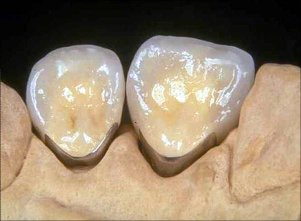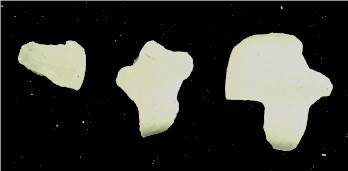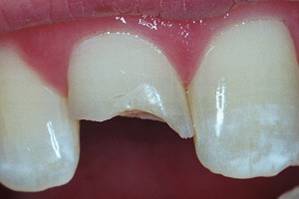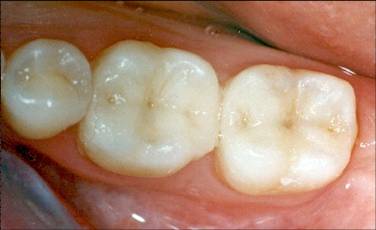Recent trends in treatment of dental caries.

Enamel De-meneralized before Caries Cavity is Formed.

Enamel Re-meneralized before Caries Cavity is Formed.
Regular visits with your dental professional on an appointment schedule that he recommends based on your own needs. Regular visits will ensure you have the benefits of preventive care and early diagnosis, as well as, treatment for any dental problems. Guidance about home dental care can also be provided to avoid future problems
Diet plays an important role. Minimize the frequency of sugary foods, thus reducing the amount of acid produced. Select snacks that are less cavity causing, such as fresh fruit, plain yogurt and raw vegetables.
The use of fluoride will help decrease the risk of cavity formation;Good plaque control. Maintain a strict and regular home care routine to minimize plaque growthIt is recommended that you consult your dental professional before using any commercial products. You want to make a selection based on the effectiveness of the product and your own personal needs.
What are the braces?
Braces are put on teeth to help correct rotated teeth, too large of spaces, crowding or misalignment of teeth. Newer techniques today allow for wire frames to be worn that can spread open the arch if it is too small, or pull one side of the jaw to correct for overlap on one side only. In addition, clear brackets and brackets that can be bonded inside the teeth are making braces a good option for many adults today. What are dentures?Dentures are false teeth. They are typically made from impressions (molds) that are taken of the inside of the mouth and they are made of a type of plastic or porcelain that duplicates the shape, size and function of the teeth.Seek dental care immediately if you have:Pain, non-healing sores, in your mouth, loose teeth, painful clicking in your jaw, frequent headaches (especially in the morning), bleeding gums, or if you haven’t been to the dentist in more than six monthsHow can I care of dental implantTry to keep the implants free of plaque usingthe following brushes as seen for all types ofdental Implants.
What is Periodontal Disease?
Periodontal disease affects the periodontium (the supporting structures of the teeth). The cause of this disease is multifactorial, but the presence of bacteria in plaque certainly plays a major role. The supporting periodontal structures begin to breakdown. This can mean that part of the bone that supports the teeth or the ligaments that hold the teeth securely in place are destroyed. This disease process isgenerally not reversible and may require treatment from a dental professional specializing in periodontal disease. Periodontal disease can develop as a result of poor daily plaque control (e.g. brushing and flossing). However, not everyone with poor brushing and flossing techniques will develop this condition. It is wise to visit your dentist regularly in order to detect early stages of the disease and to prevent further damage.
What is Gingivitis?
Gingivitis is inflammation of the gums. Some common features associated with gingivitis are red and swollen gums, and the presence of bleeding while brushing and flossing. The cause of gingivitis is the bacteria in dental plaque. This disease is reversible with good oral hygiene practices.
What is Calculus (Tartar)?
Calculus is dental plaque that has mineralized. Calculus can form when plaque is not removed from the tooth surfaces. This plaque becomes old and eventually forms into calculus. Calculus can form above or below the gumline. The bacteria that sticks to calculus can cause gum disease (gingivitis) or periodontal disease. Calculus cannot be removed by brushing and flossing. A dental hygienist checks for calculus formation when you visit the dental office. It is removed with special instruments designed to adapt to the tooth surface affected without causing trauma to the soft gums.
Can I use any oral hygiene products?
There are so many products on the market it can become confusing and choosing between all the products can be difficult.Automatic and high-tech electronic toothbrushes are safe and effective for the majority of the patients. Oral irrigators (water spraying devices) will rinse your mouth thoroughly, but will not remove plaque. You need to brush and floss in conjunction with the irrigator.Some toothbrushes have a rubber tip on the handle, this is used to massage the gums after brushing. There are also tiny brushes (interproximal toothbrushes) that clean between your teeth. If these are used improperly you could injure the gums, so discuss proper use with your doctor.Fluoride toothpastes and mouth rinses if used in conjunction with brushing and flossing can reduce tooth decay as much as 40%. Remember, these rinses are not recommended for children under six years of age. Tartar control toothpastes will reduce tartar above the gum line, but gum disease starts below the gumline so these products have not been proven to reduce the early stage of gum disease.Anti-plaque rinses, approved by the American Dental Association, contain agents that may help bring early gum disease under control. Use these in conjunction with brushing and flossing.Professional Cleaning. Daily brushing and flossing will keep dental calculus to a minimum, but a professional cleaning will remove calculus in places your toothbrush and floss have missed. Your visit to our office is an important part of your program to prevent gum disease. Keep your teeth for your lifetime.What is Plaque?Plaque is the accumulation of bacteria, microorganisms and their products which sticks to the tooth surfaces. Dental plaque is soft and easily removed by brushing and flossing the teeth. Accumulation of plaque can lead to tooth decay, gum disease (gingivitis) and periodontal disease.
How can I care for Sensitive Teeth?
Sometimes after dental treatment, teeth are sensitive to hot and cold.
This should not last long. If your teeth are especially sensitive consult with your doctor..
How can I attain a good oral hygiene?
Proper oral hygiene is prevent tooth decay and gum disease. By brushing, flossing and regular visits to the dentist.Each day a thin colorless film called plaque develops on your teeth.This film of plaque must be removed daily by proper brushing and flossing. We recommend that you brush at least twice a day, in the morning and before you go to bed, and floss nightly.Patients who have a higher build up of plaque may need a more frequent debrement of the plaque.
PROPER BRUSHING
Proper brushing helps minimize the risk of tooth caries and gum disease, the major causes of tooth loss. Use a medium-bristle brush and fluoride toothpaste to remove plaque and food particles. Replace your brush every three months.
PROPER FLOSSING
Flossing daily removes plaque and food particles between teeth and below the gumline. Wrap an 18-inch strand around your middle fingers and hold a one-inch section tightly.Ease floss between teeth. Clean up and down several timeswhile curving around teeth at the gumline.Always floss behind the last tooth.Unwind clean floss as you proceed.Floss around the abutment teeth of a bridge and under artificial teeth using a floss threader.You may experience sore or bleeding gums for the first several days you floss. If bleeding continues after the first week of flossing, call your dental professional.
When do dentists decide to extract a tooth?
Some are extracted because they are severely carious teeth, others may have advanced periodontal disease (“gum disease”), or else have broken in a fashion which cannot be repaired. Other are irregular ugly teeth in the mouth (such as impacted wisdom teeth), or else failed root canal treatment.
Can we protect susceptible areas of tooth of decay?
Yes we can by applying dental fissure sealantsTooth decay is caused by quot;plaque” able to create a cavity. The idea behind brushing teeth is that the plaque that has accumulated on a tooth’s surface is scrubbed off. Some teeth however, because they are ugly teeth, or iiregularly arranged are harder to effectively clean.
When do we will be in need for a dental porcelain crowns?

Porcelain crowns are a type of dental restoration which, when cemented into place, protect toothCrowns
can be made out of porcelain (or some other ceramic material),gold (or metal alloys), or a combination of both.Crowns are placed over a tooth when a large tooth decay . Crowns that are white are made of metal free porcelain.
What is a Root canal treatment?
Root canal treatment refers to the treatment of “pulp tissue”.Most people would probably refer to a tooth’s pulp tissue as its “nerve”. Root Canals. A root canal is typically done whenever the decay or caries of the tooth invades the pulp. When a root canal treatment is done, the inner portion of the pulp is removed, along with any infection that may have invaded the inside walls of the tooth. Then a sealer material is placed with a rubbery plastic to fill the hole so that new infection can’t get into the tooth. Generally, by performing a root canal treatment potentially weaken a tooth and therefore, it is common to protect the integrity of the tooth by placing a porcelain crown. Root canal treatment gives dentists a safe and effective means of saving teeth. Without root canal treatcanal, your tooth will eventually have to be removed.
What about objects Caught Between the Teeth?
Try to gently remove with dental floss. If are not, go to the dentist. Also toothache ?Rinse the mouth with warm water to clean it out. Make sure aren’t lodged around the tooth by using dental floss. Don’t ever put aspirin or any pain killer on the gums or around the aching tooth.
What I can do if bitten tongue or lip?
Clean the area gently with a cloth and then apply cold compresses to reduce the swelling. If the bleeding doesn’t stop, go to a hospital emergency room immediately.
Why are Ceramics or porcelain used for larger restorations?
Ceramic fillings, or porcelain are typically used for the larger and more broken down areas. In these cases, an porcelain inlay or porcelain onlay to cover more of the tooth’s surface may be indicated. The porcelain ceramic restorations are more expensive. porcelain ceramic restorations are much more durable and will not stain.
What are Porcelain Inlays/Porcelain Onlays?


White fillings looked good. Today, there are two types of white fillings. The plastic fillings that are placed in one visit in the office. The real advances have been made in laboratory processed white fillings called “Porcelain inlays” and porcelain onlays”. They are beautiful, strong, and usually long lasting.
What are porcelain veneers?
Porcelain veneers, or dental porcelain laminates, are wafer-thin shells of porcelain which are bonded onto the front side of teeth so change the ugly teeth or bad teeth to obtain beutiful teeth. Porcelain veneers are routinely used to idealize teeth that are discolored or badaligned. Porcelain veneers are the most recent application of the art and science of cosmetic dental bonding. A Porcelain veneers create a very life-like tooth appearance and Porcelain veneers resist staining.
What is the treatment of carious cavities?


We have to fill.Either white filling as composite resin or dental Porcelain, are used when esthetics is a concern. While the currently available materials used for composites are as strong as silver fillings on the chewing surfaces, they do excellently in the grooves, and dramatically lower the development of carious cavities.
What is a caries cavity process and its prevention?
A caries cavity is a pathological destruction of the tooth i.e. enamel, dentin, and cementum.
Role in how susceptible you are to the formation of a caries cavity, for example .Tooth structure, size and shape of the tooth may be passed down through generations or if your parents also had a large number of cavities. Teeth that are mal-positioned and called ugly teeeth in the mouth, that are hard to access with your toothbrush or floss.
The absence of fluoride during tooth formation and following tooth eruption can increase the incidence of caries cavities. Fluoride promotes strong tooth development and remineralization of the tooth. Saliva:has a protective function in the mouth against carious cavities, for example: A good flow of saliva washes away food and bacteria on the teeth and gum tissues
Salivary flow helps to neutralize the acids produced by bacteria from plaque, thus a good flow helps reduce the chances of a cariuos cavity formation. The consumption of high sugar foods is best if eaten with a regular meal. This will confine the sugar exposure to one sitting. A tooth is covered by plaque, which consists mainly of bacteria. Plaque is often found: Close to the gum, In between teeth, in fissures and “hidden” sites. When the concentration of calcium appatite relduced by 5%, this is a caries tooth. Dental caries is a multi factorial disease starting with demeneralization The instruments clinically available for the diagnosis are inadequate to detect lesions early and quantitatively. More recent computerized instruments or laser instrument now used to perform this way of treatment by not to restore treatment but by the process of restoring minerals . The caries cavity may be restored with a white filling or others.
Is it possible to replace a tooth without grinding the neighboring ones?
Of coarse, yes. This refers to DENTAL IMPLANT and will behave and look as a natural tooth. its possible; (Go to presentations to see DENTAL IMPLANTcases).
